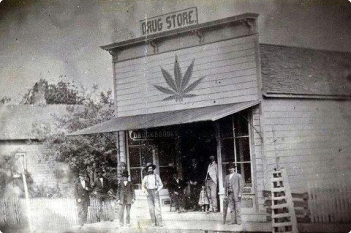What is the State of Marijuana in North Dakota?
Cannabis is legal for medical use but not for recreational use in North Dakota. Patients, however, are not permitted to cultivate cannabis at home. Possessing a small quantity of marijuana for recreational use is a misdemeanor offense in the state. North Dakota officially allows the cultivation of hemp with 0.3% THC or less. Voters in North Dakota approved Measure 5, also known as the North Dakota Compassion Care Act, to legalize medical marijuana in 2016. An amendment to the state’s medical marijuana law, Senate Bill 2344 (SB 2344), makes it illegal for anyone to grow their own cannabis. Qualifying patients and their caregivers can buy up to 7.5 ounces (about 212.62 g) of marijuana within a 30-day period from licensed medical dispensaries in North Dakota.
How has Marijuana Affected the North Dakota Economy?
Marijuana is not yet legal for recreational use in North Dakota, but the projected annual revenue is expected to be between $8 million and $10 million if legalized. If the proposed legalization bill passes, all marijuana sales would be taxed at 5% statewide, plus up to 3% in local sales taxes. This does not include an excise tax, also called a "sin tax," that lawmakers might put on sales of marijuana. The proposed legalization is also expected to generate $3.1 million from marijuana businesses in the form of application and registration fees.
What is the Marijuana Crime Rate in North Dakota?
Even though recreational cannabis use and possession are not legal in North Dakota, marijuana possession has been decriminalized. In May 2019, HB 1050 eliminated jail sentences for the possession of marijuana paraphernalia and up to 14 grams of marijuana. In 2015, before the legalization of medical marijuana in North Dakota, the FBI crime data report showed that there were 2,331 arrests for marijuana possession and 146 for marijuana sales crimes in North Dakota. In 2016 when the state legalized medical marijuana, North Dakota had 2,610 marijuana possession-related arrests and 156 cannabis sales-related arrests. Law enforcement made 2,567 marijuana possession-related arrests and 197 arrests for marijuana sales offenses. In 2018, there was a slight drop in the number of marijuana-related arrests; 2,552 for possession and 161 for sales offenses.
In 2019, North Dakota recorded 2,192 arrests for marijuana possession and 99 for cannabis sales offenses. These figures declined in 2020, with 1,929 arrests for marijuana possession and 73 for marijuana sales. In 2021, the number of marijuana possession arrests (1,761) further declined while the state recorded 79 marijuana sales-related arrests. The state recorded 1,690 and 1,780 marijuana possession arrests in 2022 and 2023 respectively. Marijuana sales arrests numbers for these years stood at 71 and 44. Overall, there is a measurable decline in the marijuana crime rate in North Dakota since the legalization of medical marijuana.
How Do I Get a North Dakota Medical Marijuana Card?
North Dakota issues its medical marijuana card to both residents and non-residents. Patients must be at least 19 years old to apply for their own medicinal marijuana cards. On their application, a patient under the age of 19 must list a parent or legal guardian as their caregiver.
To obtain a card, a patient must register with the North Dakota Medical Marijuana Patient Registry, which is administered by the North Dakota Department of Health (NDDOH). They can apply for the state's MMJ card online through the North Dakota Department of Health and Human Services (HHS). A North Dakota MMJ cardholder may possess the following:
- No more than 3 oz of cannabis flower and dried leaves per month (but a patient can only purchase 2.5 oz (about 70.87 g) at a time). The physician may extend the possession restriction for cancer patients to 6 oz (about 170.1 g)
- Up to 4,000 mg of THC per month from cannabis concentrates, such as oils, capsules, and pills
- Up to 500 mg of THC in a cannabinoid edible product
Patients younger than 19 are not allowed to use dried leaves and flowers or products with more than 6% THC. For patients to be able to smoke herbal cannabis mixtures, their doctor must give them a special certification. Aside from that, patients may only acquire cannabis-infused tinctures, pills, patches, or topicals.
What is the History of marijuana in North Dakota?
In 1933, North Dakota passed a law banning marijuana, beginning the state's marijuana prohibition. In 2016, the North Dakota Compassionate Care Act was supported by state voters. Despite this, the North Dakota Legislative Assembly waited two years to implement the provisions of the Act.
Despite voter approval, legislators outlawed home medical marijuana cultivation in 2017. Additionally, the bill increased the legal protections afforded to patients, caregivers, and companies that sell medical marijuana. House Bill 1050, which lessens the consequences of marijuana possession, was passed into law in May 2019. It recommended a fine of up to $1,000 and no jail time for first-time offenders as penalties for possessing up to 0.5 ounces (14 grams) of cannabis and marijuana-related accessories. In April 2019, the governor signed House Bill 1519, which expanded the ways qualified patients in North Dakota can use medical marijuana.

Cultivation of marijuana in the United States, the early 17th century.




